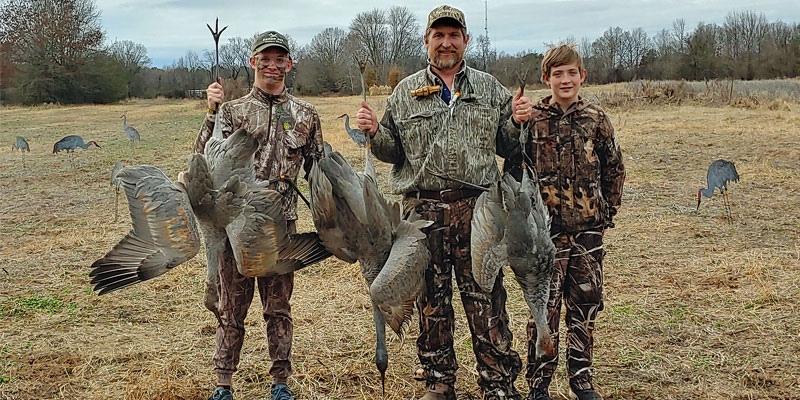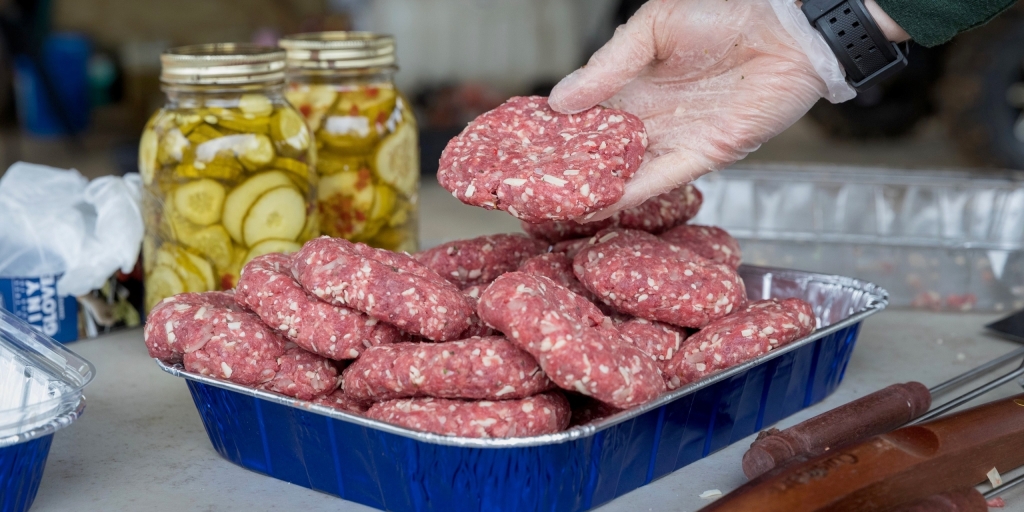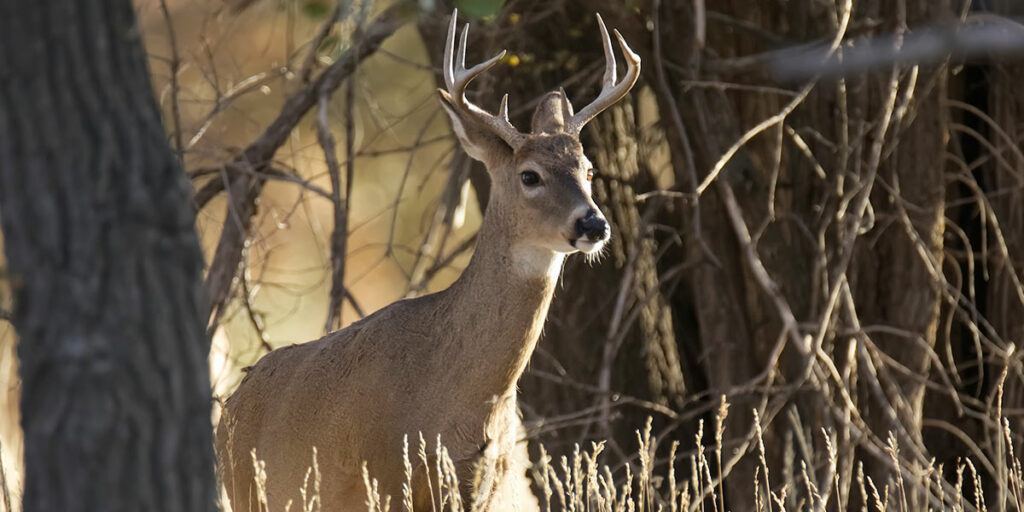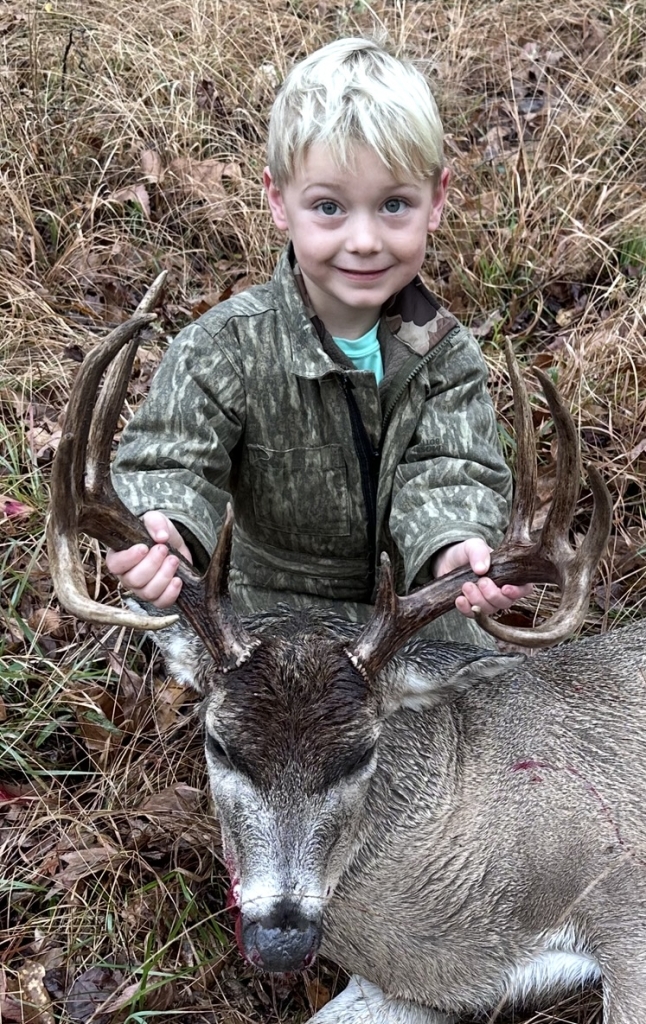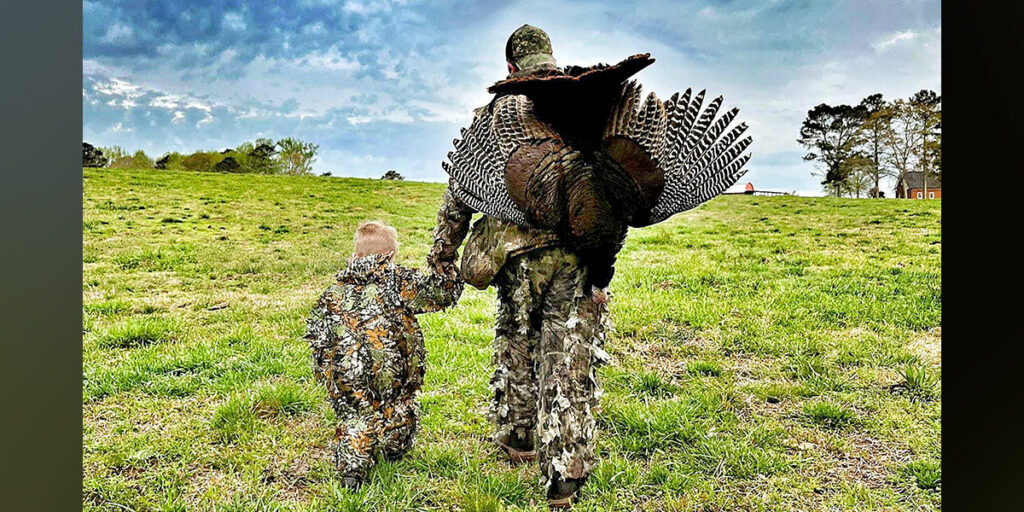Another warm winter left Alabama’s duck hunters frustrated, but those who were lucky enough to score permits for the first sandhill crane season in the state in 103 years were elated.
Although not all of the 400 crane permit holders were able to harvest one of the large birds, those who did raved about the new hunting opportunity.
Jason Russell of Gadsden, Alabama, and his 17-year-old son, Grayson, both drew permits, which allowed a harvest of three birds each.
The first order of business was to secure a place to hunt sandhills in the hunting zone in north Alabama. Fortunately, a friend from Birmingham had connections with a landowner near the Wheeler National Wildlife Refuge, and they were granted permission to hunt.
“We were excited to get an opportunity to hunt the sandhills,” said Russell, an avid duck hunter and award-winning decoy carver. “We’d seen them around for years. We really didn’t know the reality of what it would take to kill one. Once we were drawn, we thought we’d give it a shot. We bought decoys and got ready. What was interesting this year, everywhere I went, I saw cranes. I saw them near my house. At Weiss Lake, we saw cranes. At Guntersville, we saw cranes. Everywhere we went, we at least saw cranes flying.”
On the morning of the first hunt, the Russells saw several cranes in the field they planned to hunt and saw several more in the air. After setting up their decoys, both full-body and silhouettes, they settled into their blinds.
“Within 20 minutes we had a group of birds fly 15 yards over our decoys,” Jason said. “We ended up letting them go because we were so awestruck that our setup actually worked. We were kind of surprised. Another 20-30 minutes went by and groups of two and three came by. On our first hunt, three of us had permits, and we killed six birds on an afternoon hunt that lasted maybe two or three hours. We were pretty excited that you could actually decoy them. After duck and goose hunting for 30 years, this gives hunting a new twist and a new excitement.”
The Russells had planned to hunt cranes just like they would geese in an open field with layout blinds. They soon discovered natural vegetation helped them hide much better.
“There was some scrub brush sticking up,” Jason said. “I thought, well, let’s at least be comfortable. There was enough brush to where we could get hidden. We put our full-bodies out at 20 yards, hid our faces and kept our heads down. We were shooting decoying birds at 15 to 20 yards.”
The hunters left that area undisturbed for three weeks before attempting a second hunt. They were even more awestruck when they arrived at the hunting land. Jason needed two birds to fill his tags, while Grayson only needed one.
“When we got there, there must have been between 200 and 300 sandhills in the field,” Jason said. “After we got set up, three birds came in and I doubled up.”
With only one tag left, the cranes seemed hesitant to decoy. The Russells soon figured out that trying to mix crane hunting and goose hunting might not work very well.
“We had put out full-body goose decoys to try to kill a few geese while we were there,” Jason said. “It was interesting that the cranes seemed to be skirting our decoys. We decided either we were going to have to move or do something different. We made the decision to pull all the goose decoys. By the time we pulled the last goose decoy and got back in the blind, we had a pair of sandhills at 15 yards. My son rolled his out, and we were done. It could have been coincidence that we pulled the goose decoys and we killed one, but I feel like they flared off of the full-body goose decoys. We were just catching the cranes traveling from one field to another. I guess they decided to drop into our decoys to see what was going on.”
Before the hunt, Russell was afraid that it might be possible to mistake a protected whooping crane for a sandhill crane. That turned out to be an unrealized worry.
“One of my fears was being able to identify the birds if we were in low light,” he said. “Sometimes when you get the sun wrong, you can’t see color that well. I thought we were going to have to be really careful to look out for whooping cranes. But that was not a problem. The whooping cranes stood out like a sore thumb. We made sure there was no shooting at all when those were in the area. And we never shot into big groups of sandhills. We never shot into groups of more than four birds. I felt like we didn’t educate them for the most part. If people will be smart and shoot the birds in the decoys or really close, then it will be a good thing for years to come.”
Jason said it was “awesome” that he and Grayson both got permits in the first year of the new sandhill season.
“To get to shoot our sandhills together was special,” Jason said. “On our first hunt, we shot into a group of three birds and each of us got one. It was real exciting to get to have that moment of father-son hunting. It was just a neat, awesome experience that we will never be able to share again in waterfowling.”
Jason took his youngest son, 13-year-old Jonathan, on the second hunt to share the experience although Jonathan wasn’t able to hunt.
“I just wanted him to see it,” Jason said. “I was excited for him to get to watch and hear the sounds of how loud those birds really are. It was amazing. He carried one of the birds out of the field. It was a big, mature bird and he cradled that thing all the way out of the field.”
The excitement wasn’t over for the Russells when they prepared the crane for the dinner table.
“Cooking them was phenomenal,” Jason said. “We cooked some one night and took a little to a church group. One of the guys who doesn’t eat wild game said it was the best meal he’s eaten in his life. It was very flavorful. I thought it would be more like a duck, but it wasn’t. We enjoy eating duck, but I could eat way more sandhills. It was just so tender. I’ve always heard sandhills were the ribeye of the sky. Now I believe it. When you put it in your mouth, it tasted like steak. It was tender and juicy. Oh my gosh, it was so good.”
Seth Maddox, the Alabama Wildlife and Freshwater Fisheries Division Migratory Game Bird Coordinator, said the duck season was indeed disappointing, but he was enthusiastic about the first sandhill season.
The final results of the sandhill season won’t be available for a couple more weeks to allow permit holders to complete their post-season surveys.
Maddox said he expects the final numbers to be in line with other states with sandhill seasons.
“From the hunters we’ve talked to, it seems to be a pretty successful sandhill season,” Maddox said. “We’re expecting a harvest rate of about 30 percent, which will be a little more than 300 birds.”
Maddox said the warm winter not only caused diminished duck numbers in Alabama but also affected the sandhill population.
“Sandhill numbers were a little below normal for the birds we typically over-winter here in Alabama,” he said. “Our 5-year average is 15,000 birds. This year, we estimated the population at 12,000, which made for a little tougher conditions for hunters. The birds tended to concentrate in areas closer to the refuges.”
Maddox said the sandhill season is the first of four as an experimental season under U.S. Fish and Wildlife Service regulations. He said the number of permits (400) and tags (1,200) will be the same next year.
Alabama’s sandhill harvest rate is similar to that of Tennessee and Kentucky, which surprises Maddox a bit.
“Our season was probably a little better than I expected,” he said. “Our hunters had never done it before. They had to find people willing to give them access to hunting land. Hunters got to make new friends. I think it was a very successful season.”
David Rainer is an award-winning writer who has covered Alabama’s great outdoors for 25 years. The former outdoors editor at the Mobile Press-Register, he writes for Outdoor Alabama, the website of the Alabama Department of Conservation and Natural Resources.




